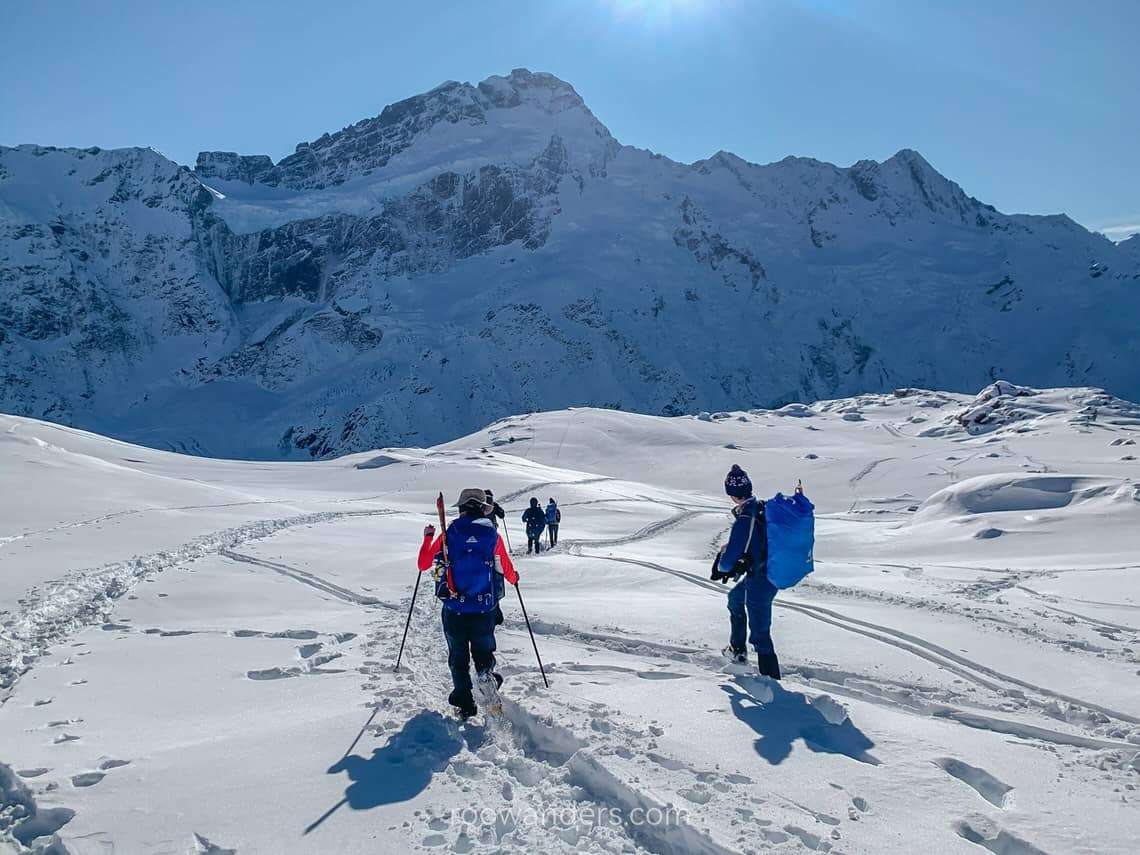
Mueller Hut in Winter: A Guide | New Zealand
Mueller Hut, the iconic red alpine hut in Aoraki/ Mt Cook National Park, holds some of my most treasured memories of hiking in New Zealand.
At a time when New Zealand was closed to the outside world due to the pandemic, I was checking off world-renowned Great Walks on my first winter in this beautiful country.
I was in New Zealand for two years on the Working Holiday Visa.
Hiking to Mueller Hut and spending a night there was surreal. The land was covered in such thick snow we had to use crampons and ice picks! We even trekked up to Mount Ollivier – the most doable peak from Mueller Hut.
Thinking of hiking to Mueller Hut and spending a night there? Well, here’s what you got to know.
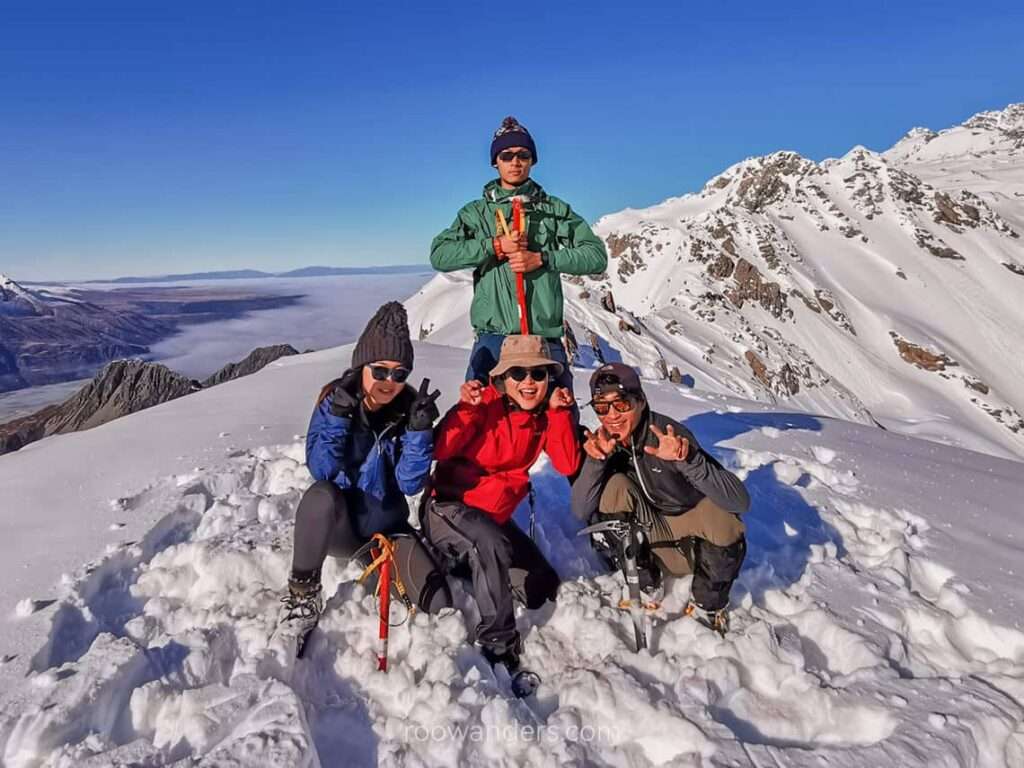
I hiked to Mueller Hut in Jul 2020. This post contains affiliate links that cost nothing to you but support my blog! It may also be updated periodically. Cheers!
Brief background of Mueller Hut
Mueller Hut is 1,800 m above sea level on the Sealy Range, and a stone’s throw from New Zealand’s highest and most prominent peak – Aoraki/ Mt Cook.
The hut was named after a nearby glacier. The glacier itself was named after a prominent German Australian botanist & explorer – Ferdinand von Mueller.
The first Mueller hut was built in 1914 in the name of science at another site.
Over the years, freak weather and sudden avalanches – as expected in the mountains and New Zealand – destroyed several earlier versions of the hut.
Had it not been a location change, we wouldn’t have the present fifth hut with modern facilities.
What made this current hut even more special was that it was Sir Edmund Hillary – one of the first climbers to reach Mount Everest – who did the ribbon-cutting in 2003!
Mount Ollivier, a short distance from Mueller Hut, was the first major peak Sir Edmund scaled.
It takes about 4 hours one way over 5.2 km, with an elevation gain of over 1 km to reach the hut from the trail head.
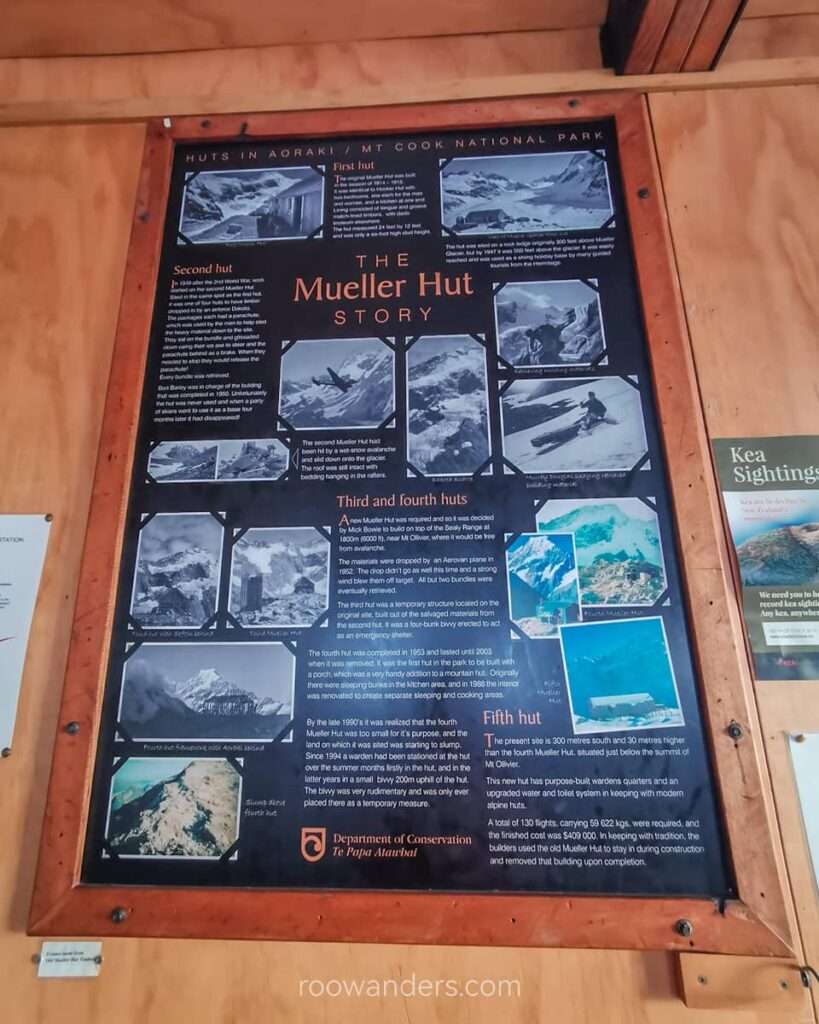
Best time to visit Mueller Hut
Mueller Hut can be visited any time, provided the weather isn’t too treacherous and/or the drop toilet isn’t full.
Coming from perpetual heat in Singapore where snow is impossible, I look out for such opportunities overseas.
Winter (Jun to Aug) is a magical time to exist up in the mountains, where you’d get striking snow-capped peaks! Throw in a red hut nestled amongst a sea of white – can you see how beautiful Mueller Hut is in winter?
But trekking in winter also meant frigid temperatures, extra warm clothes, shorter daylight hours, additional hiking gear, frozen water, and erratic weather conditions. The track might even be closed due to the weather! You might even be stuck in the hut if there’s a blizzard up there!
Hiking in Summer (Dec – Feb) means no snow. What you get are uneven rocks and pebbles. Not that fun, but higher chances of reaching Mueller Hut.
Hiking in the transition periods of Spring and Autumn means you may have temperamental weather of sudden gales, light flurries, and maybe snow from early or late winter.
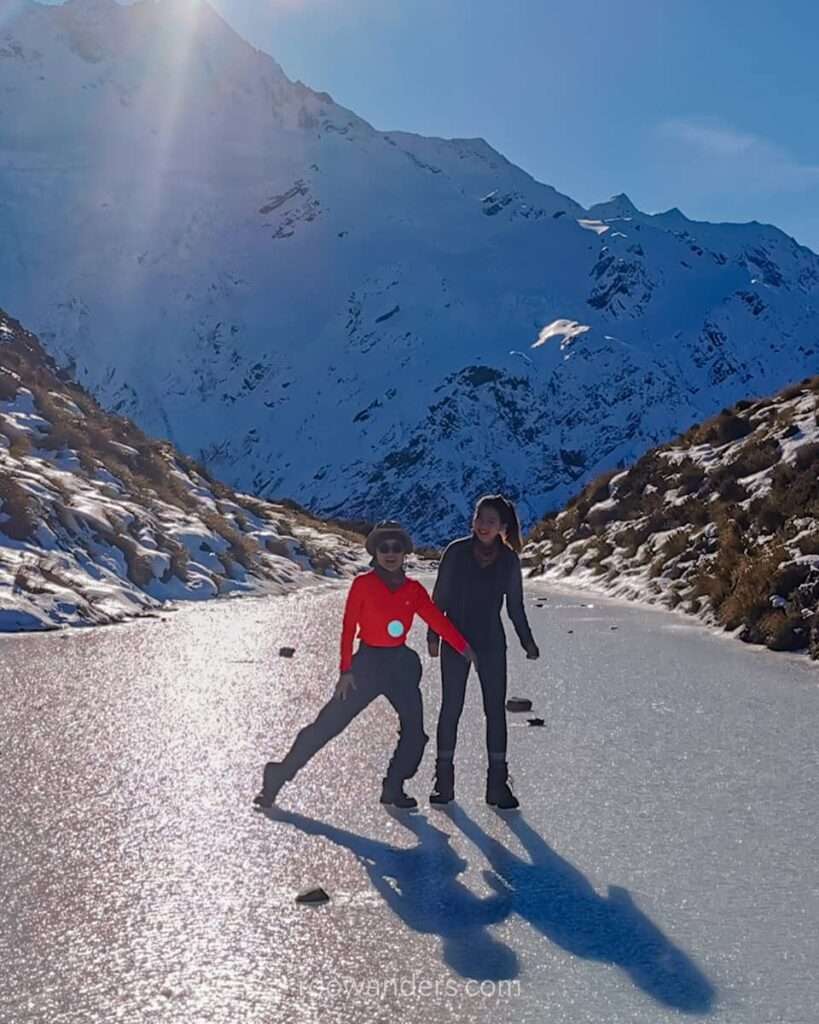
Mueller Hut Reservations
From all that I’ve described of Mueller Hut, I guess you’ve understood its appeal.
Reservation is mandatory from Nov to end Apr. During the lull period beyond the stipulated range, you’d still have to pay and register your interest with the Aoraki/ Mount Cook Visitor Centre.
There are only 28 bunk beds in the hut – imagine the scarcity! During peak trekking season when the weather is fairer and your chances of trekking up are higher, you’d need to book a slot online, preferably as early as possible, or risk being disappointed! It costs NZ$ 45 per person
Squeezing the visit as a one-day return trek is doable, but it’ll leave you tired. Besides, you’d miss the beautiful night visage when the Milky Way arises and there’s zero light pollution.
Backcountry Hut Passes and Backcountry Hut Tickets cannot be used for Mueller Hut.
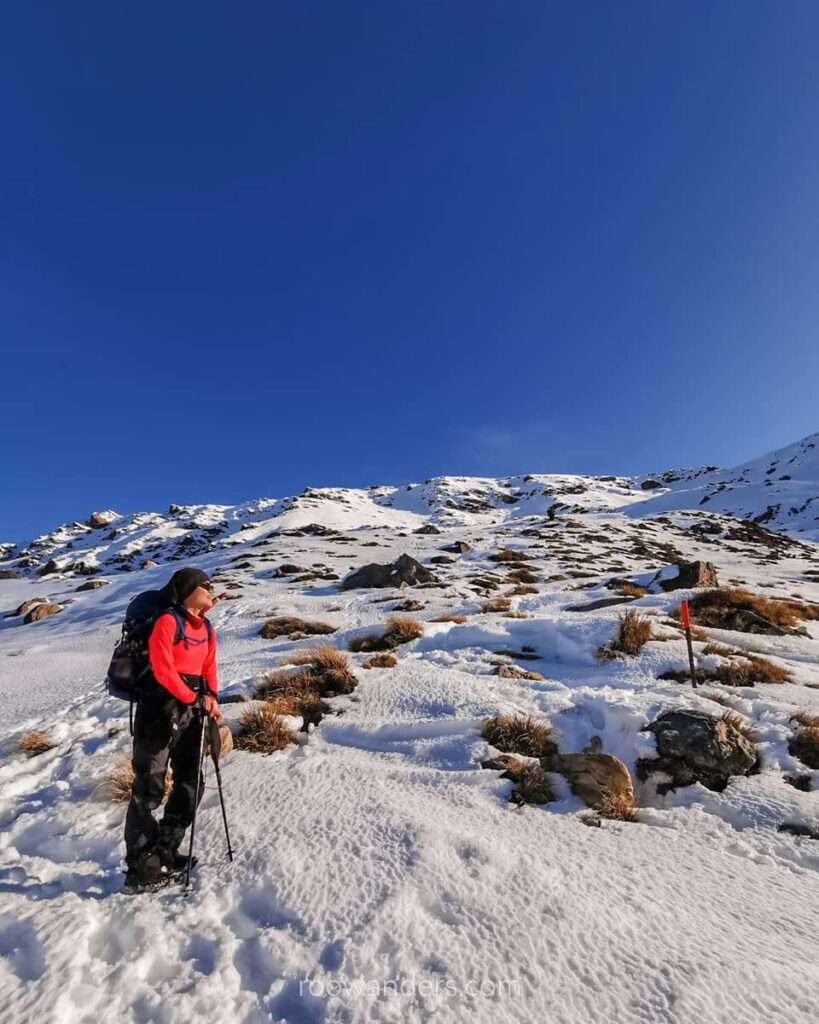
My hike to Mueller Hut
The challenge of hiking to Mueller Hut is dependent on many factors. But the top two points to consider are the hiker’s fitness level, and the weather situation that day.
When you’ve completed four Great Walks back-to-back in winter, Mueller Hut wasn’t spectacularly challenging. But we had to get used to walking in crampons over thick snow.
Hiking anytime besides the snow season might be easier since you’d carry fewer necessities, hence less weight, and breathe in warmer air. But I imagine hiking over exposed uneven rocks, a more challenging aspect than even, soft and thick snow.
Kea Point Track to Sealy Tarns – 2 hours
We began our trek from the White Horse Hill Campground towards the trailhead of Kea Point Track.
You can enter Kea Point Track from Mt Cook Village too, somewhere around The Hermitage.
White Horse Hill Campground is a non-powered paid camping site and the same site for another iconic but easier track in the Aoraki National Park – The Hooker Valley Trail.
The track zigzags steeply over to Sealy Tarns over thousands of steps – someone mentioned 2,200. There was not a single cloud in the sky, hence no snow on this track that day. Some shaded areas had remnants of snow and slippery ice.
I had to catch my breath – over the breathtaking views as well – several times. Chocolate helps.
We stopped by a frozen tarn – a small alpine lake – for lunch before continuing the next stretch. Despite the trail being called Kea Point Track, I saw no keas.
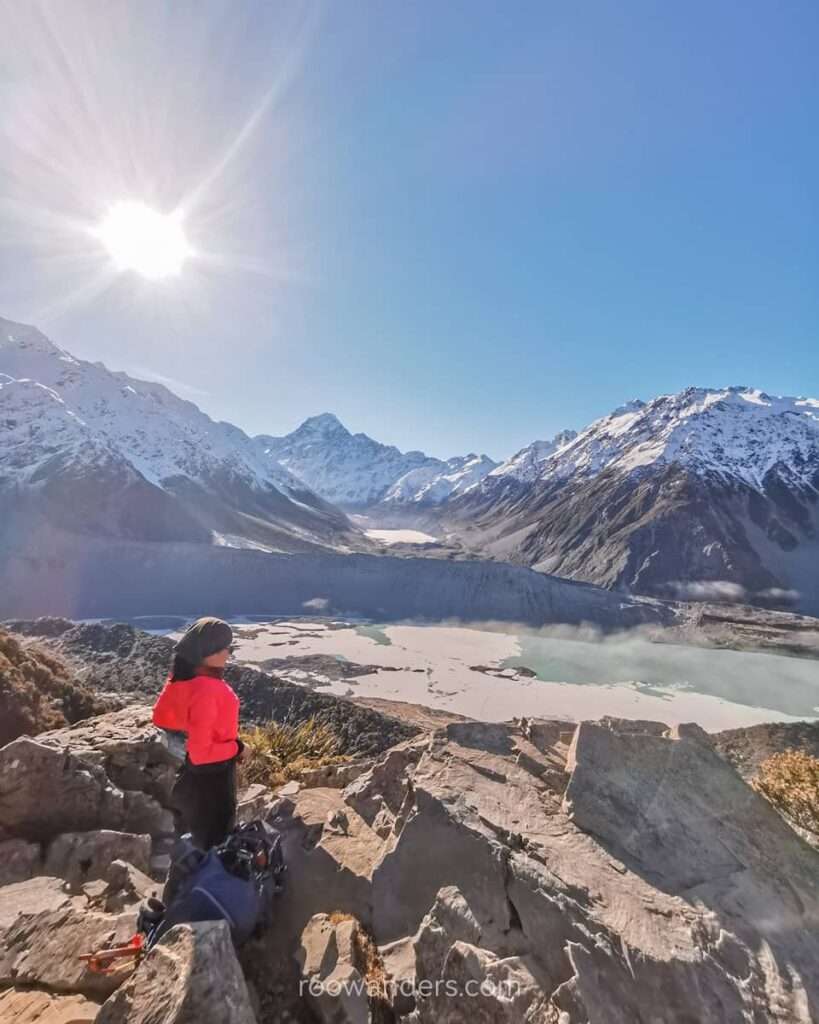
Sealy Tarns to Mueller Hut (1,800 m) – 2 – 3 hours
If you think Part I was difficult, wait till you meet Part II.
Part II was inaccessible without crampons as snow blanketed the trail.
Without the right gear, there is simply no way up as the ascent is steep, and you do not want to risk slipping or activating a possible avalanche.
We put on our crampons over snowed areas and pushed our way up the mountain with our hiking sticks.
It was pretty much like hiking over the volcanic scree of Tongariro or Taranaki, except the crampons had a better grip over the snow, and we did not slip too much.
If you were to do this during summer, there is no need for crampons. However, considering the slippery nature of scree and loose rocks, it’s another set of challenges altogether. The route may be like hiking on Mount Robert towards Angelus Hut.
Bright orange markers lined up the trail like cookie crumbs. They are definitely identifiable in summer, but in the winter we visited, some were barely visible under the thick snow!
We trailed the highlighter orange markers for another 30 minutes to reach the red hut.
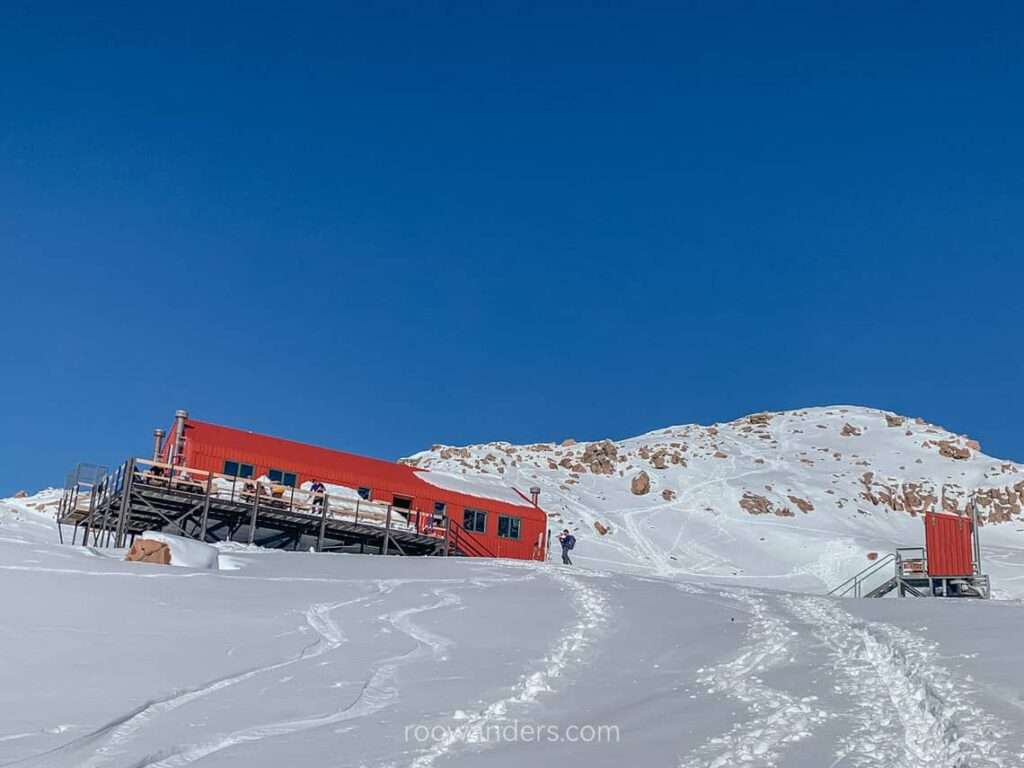
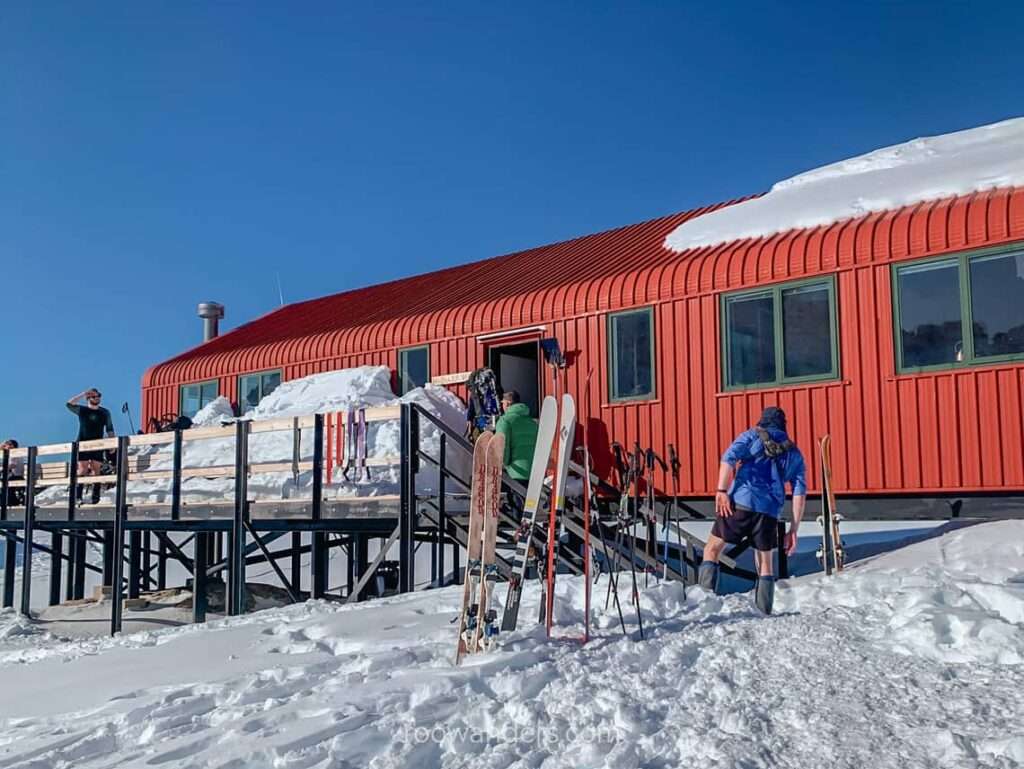
Mueller Hut
We promptly set up the sleeping area in one of the bunk rooms, prepared our dinner in their ample lounge area, and enjoyed tea from a window with a splendid view of snow and faraway peaks.
The modern hut is powered by solar lights and has gas stoves! We melted snow for water and had ramen for dinner.
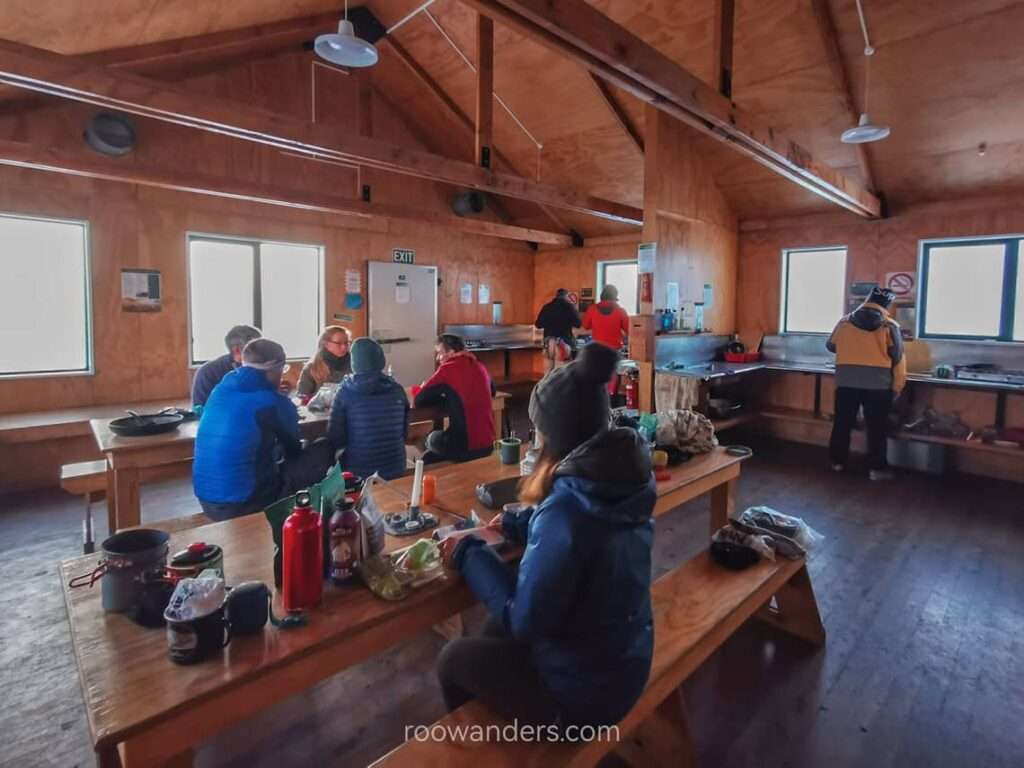
However, unlike other huts, it has no fireplace to warm the hut. A warm sleeping bag meant for sub-zero conditions is a must-have for a peaceful night in an alpine hut in the middle of winter.
Heading out to answer nature’s call was an experience. The two drop toilets were quite some distance and required quite an effort of walking on the snow to reach from the hut.
When the sun had set, and darkness eased over the sky, our team regrouped outdoors in the frigid cold to capture the nightscape. And that’s how we have a marvellous shot of the Milky Way above Mueller Hut, with me as the torch.
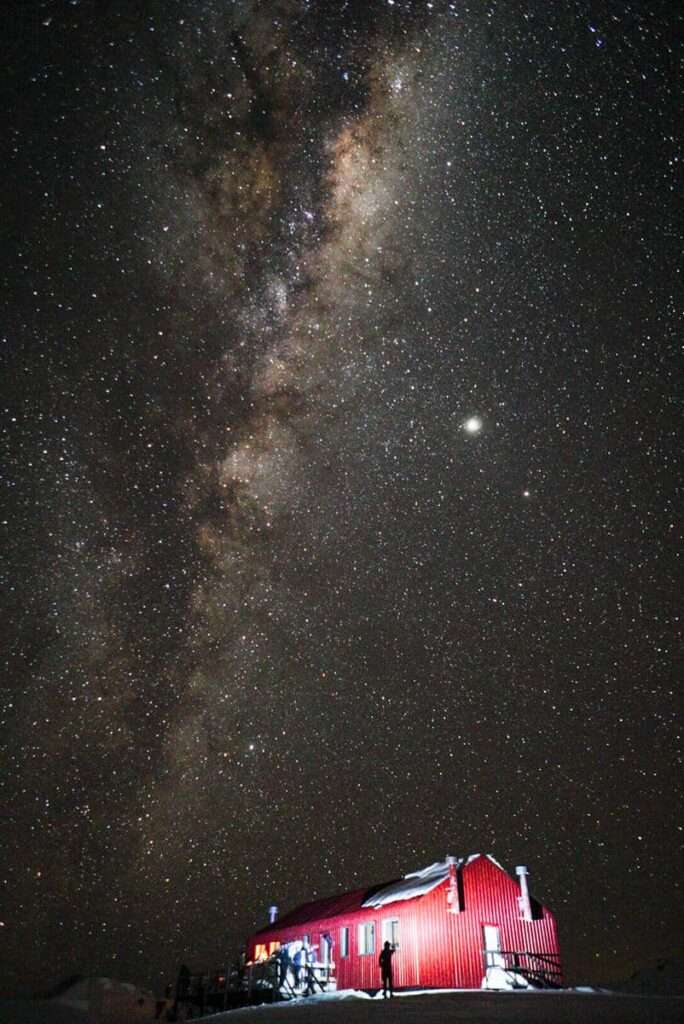
Mueller Hut to Mount Ollivier (1,933 m) – 0.5 – 1 hour
We went light and carried our ice picks and crampons for the morning tramp to Mount Ollivier.
The first ascent was similar to the portion from Sealy Tarns to Mueller Hut, but smaller in scale.
A big cairn marked the destination. Going any further beyond this point was dangerous – a big and steep drop.
Some within our group wanted to summit Mt Kitchener (2,042 m) nearby but decided against it after realising the trickiness and likelihood of falling off the mountain.
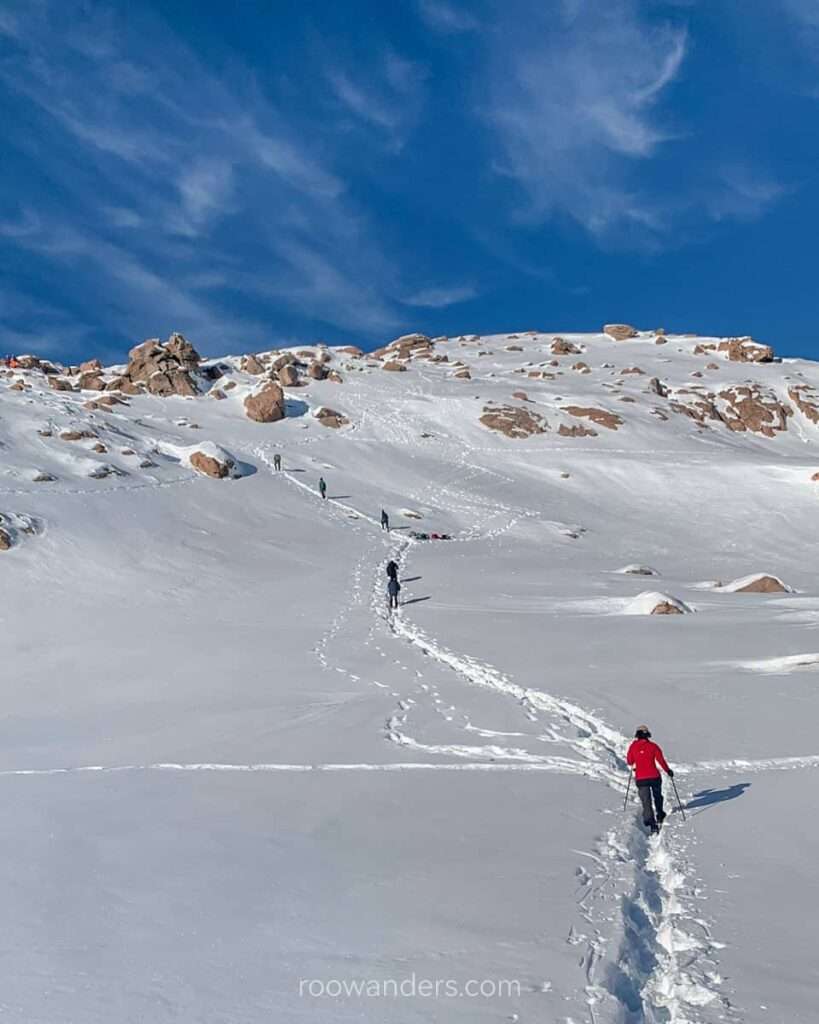
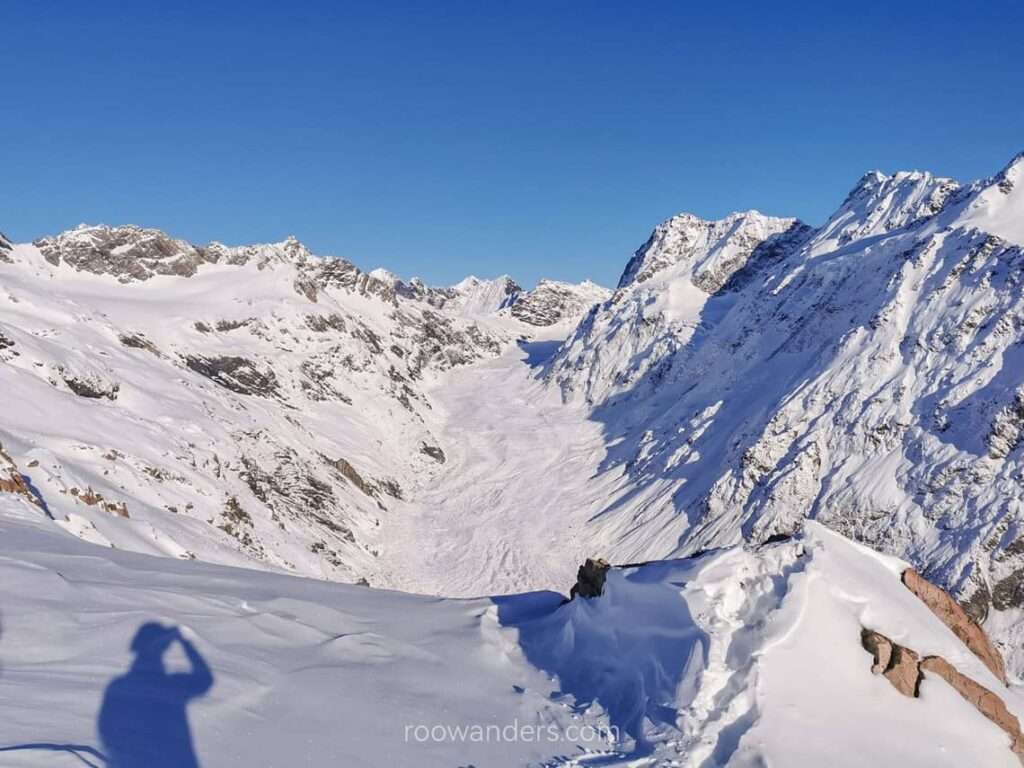
Descent back to Trailhead – 3 – 4 hours
The descent was the same as the ascent but in reverse. Unlike the strenuous ascent, we slid down the giant slope multiple times, with caution of course, and reached the trailhead much earlier.
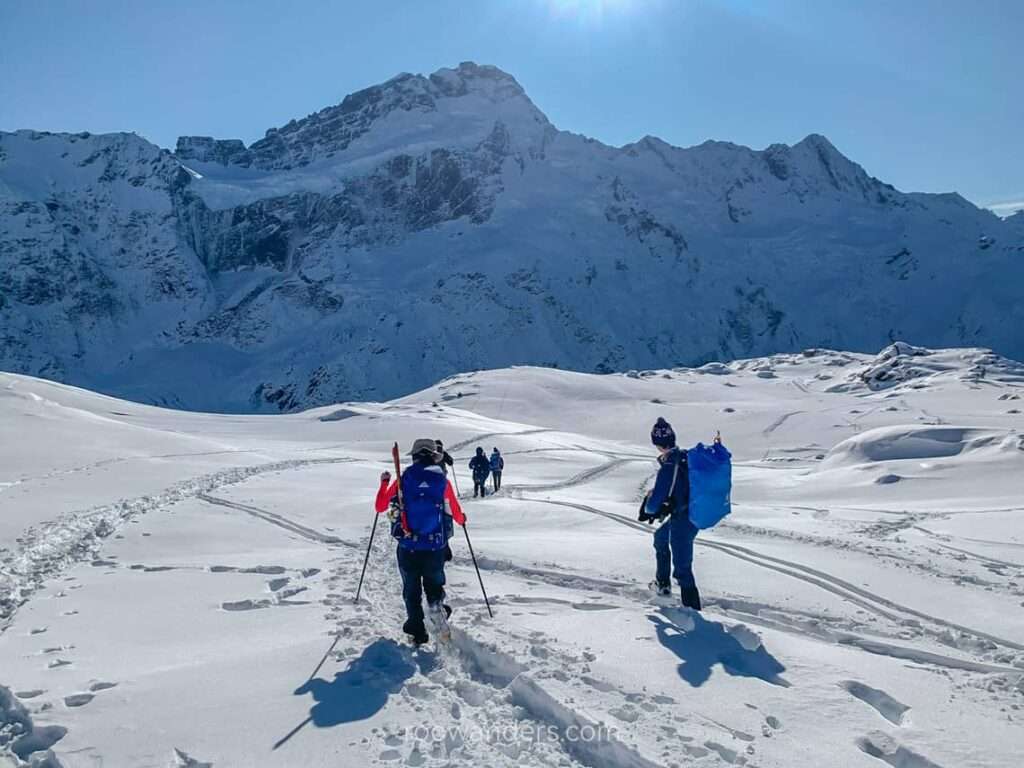
Getting to The Trailhead
If you are not already in Mt Cook Village, take the intercity bus, or rent a car or campervan from Christchurch or Queenstown and drive to Aoraki National Park!
Coming from Christchurch, it’ll take about 4 hours over State Highways 1 and 8. This journey from Christchurch to Aoraki covers quite several attractions. I’d be writing a post to document the road trip soon!
Coming from Queenstown, it’ll take around 3.5 hours over State Highway 8. As with the journey from Christchurch, the ride from Queenstown to Aoraki passes through certain towns and attractions you wouldn’t want to miss! More on this soon!
From Mt Cook Village, walk or drive the remaining 3 km to White Horse Hill Campground.
Places to Stay around Mount Cook
Since there were several of us, we booked an entire bunk room at Haka House Aoraki Mt Cook. There were hot showers, a big kitchen and a warm lounge.
If you are looking for somewhere with a bit more privacy and luxury, check out Aoraki Mount Cook Alpine Lodge, which offers beautiful mountain views of the park. The Lodge is a convenient 1 min walk from the visitor centre.

There are only a few places to stay in the village. If there are no accommodations left in the village, your next best bet would be staying at the Glentanner Park Centre, located about 18 km away.
More Pointers
- Training. Keep yourself fit and ready for the hike! This track is unforgiving to the under-prepared.
- Book in advance. Mount Cook is a very popular destination in New Zealand. Book in advance for your accommodations, tickets to tours or attractions in Mount Cook, and Mueller Hut.
- Rental in Winter. Rent ice picks, crampons and a Personal Locator Beacon (PLB) from the Visitor Centre.
- Wear Mid-cut Hiking Boots. You need at least a pair of mid-cut boots to put on the crampons. Mid-cut boots also reduce the chances of loose rocks getting into your shoes. For extra protection, cover your boots with gaiters.
- Sleeping Bags. You’d need a warm sub-zero sleeping bag to be comfortable for a winter hike. Sleeping bags are needed for summer hikes too since this is an alpine hut and it gets chilly up there.
- Windproof and Warm Clothes. Layer sensibly for the alpine trek.
- Sun Protection. Sunglasses to protect your eyes from the deadly reflection of the snow!
- A sturdy camera stand and camera. To capture the beautiful nightscape.
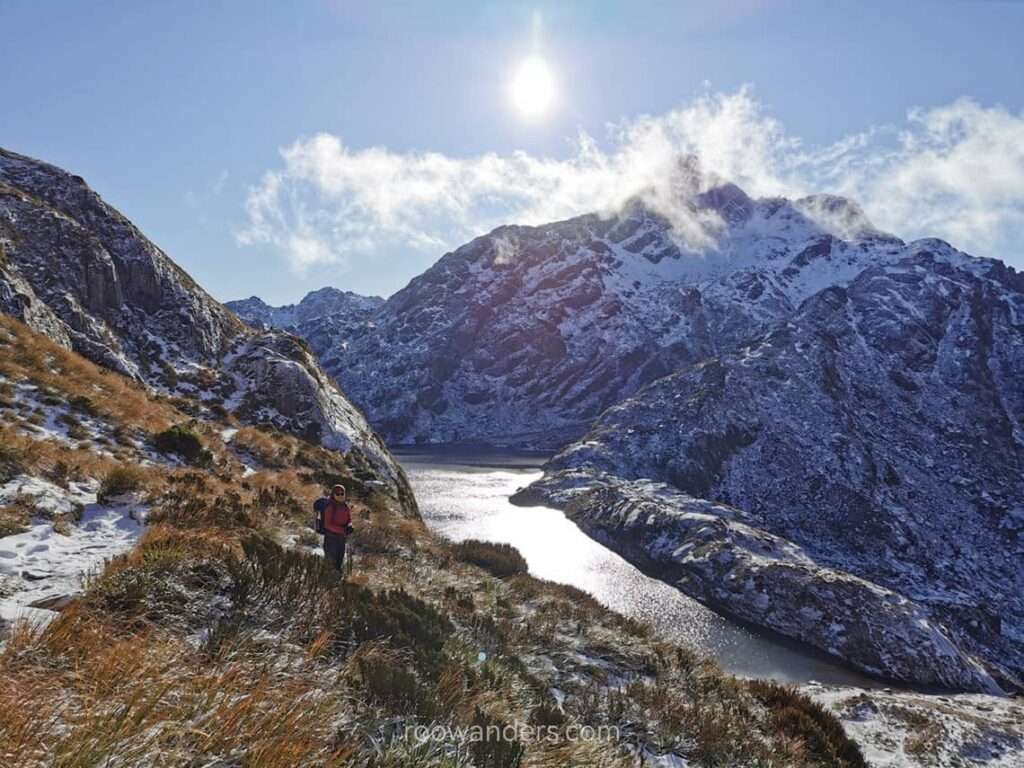
Conclusion/ Rambles
Mueller Hut is definitely an overnight tramp to remember. To be able to spend a magical night under the watch of the Milky Way is a blessing. To be able to do all that when the border was closed and no tourist could enter is a big bonus.
I am not sure what your Mueller Hut experience would be like now that borders are opened and people are travelling with a vengeance.
But rest assured, you will enjoy your overnight trek as much as I did if you do manage to get a slot!😂
Video






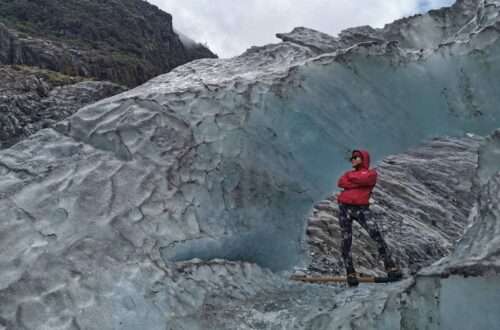
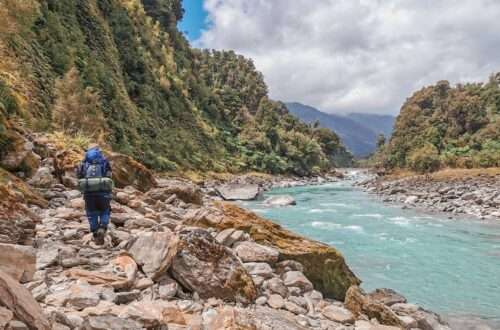
One Comment
Andy Run方跑跑Run
我也要